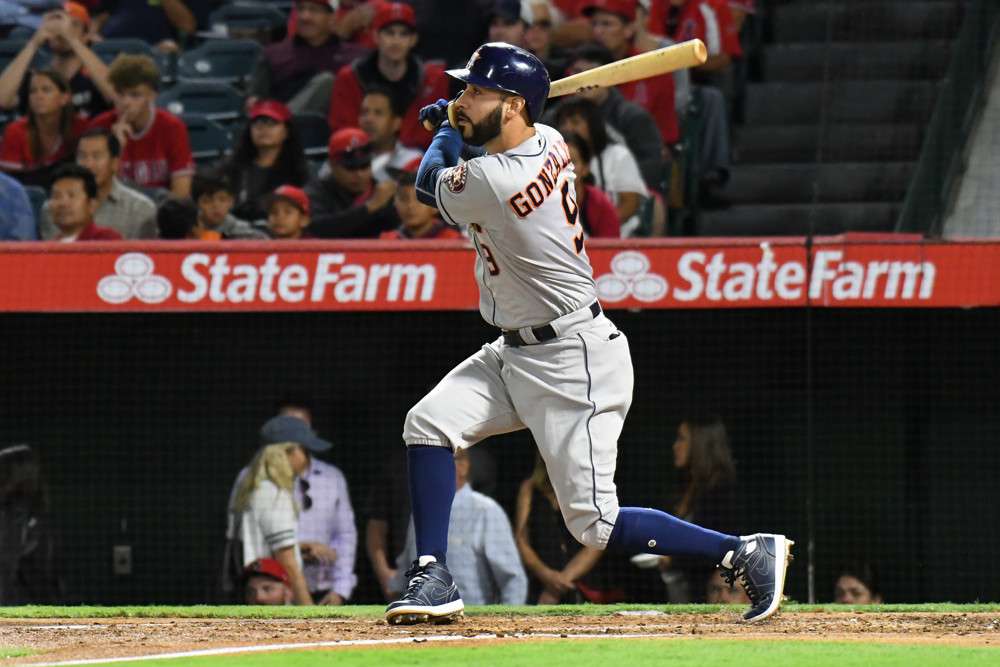
These past few seasons (roughly around midway through 2015, actually), we have seen a pretty meteoric rise in the number of home runs hit. You probably know this from the countless articles written about the topic. That, or you know it because Scooter Gennett hit four homers in one game this past season. Either way, from 2007 to 2015, the number of home runs hit in a season averaged between 4,186 (2014) to 5,042 (2009) for a true average of 4,748. In 2016, the total number jumped to 5,610, an increase of roughly 18% from the previous nine-year average. And in 2017, the number jumped even higher to 6,105, an increase of 28.5% over the average. That total smashed the previous record set in the year 2000 of 5,693, a whopping 6% higher.
There were plenty of excuses as to why this influx of power has happened. Some people believe the ball is “juiced,” some point to the rise of “three-true-outcome” players (home run, strikeout, or walk), and even some point to the new launch angle statistic being tracked more. And while the idea of people hitting more home runs because they know the degree of their batted ball trajectory makes me laugh (and gives an idea for another article), I’m more inclined to believe the first two suggestions. We’re seeing guys like Marwin Gonzalez, who has a career ISO of .154, somehow crank out 23 homers for a .226 ISO. And we are also seeing rise to guys like Joey Gallo, who slashed .209/.333/.537 and hit 41 homers while striking out nearly 37% of the time.
So the question then becomes: “How do I continue to evaluate players, particularly minor league hitters?” And while the truth of the matter is that we don’t know how long this power surge is going to last, we do have to consider it the new norm of the game until we see hints otherwise. So let’s keep that in mind as we remember a few key points when evaluating players.
First off, it’s worth keeping in mind that there were 89 players to hit 20 or more home runs last year. That means that, in a 15-team league, arguably each team could have nearly six players on their squad that hit 20+ home runs. Gone are the days of a shortstop hitting 12 home runs and being considered a power threat. If I’m evaluating a prospect and I think the power output is going to be that of a 10-15 home run hitter, then I need that prospect to be able to help me out in one or two other categories, too. Otherwise, he’s likely going to be a net negative for me if he doesn’t. For example, if I am taking a look at Mets shortstop prospect Amed Rosario, I can see that last season he hit 11 homers in 600 or so plate appearances. Because that’s below my 20-home run threshold, I’m going to need him to continue stealing bases at his 26-SB clip and hit over .300 for that to be a positive gain for me.
It’s also a good strategy to remember that, at this point, some players are actually likely to hit MORE home runs in the majors than they did in the minor leagues. Jesse Winker is a prime example. He was considered to be a low-power guy with a great batting eye and on-base ability, but in his 137 MLB plate appearances, he cranked out seven homers, which amounts to 30 in a 600 PA season. When I was predicting stats for him previously, I called him a 10-15 home run hitter. Now, with the way the ball flies out of the park, I’m comfortable saying he can get to 20 in a season, making his average and on-base abilities that much more valuable. No longer do we have to see players hitting in the Pacific Coast League and ding their power totals because of the extreme offensive environment.
One last piece of advice I have is that you really should begin to discount power-only hitters. If you read my piece on prospects I like less than the consensus, then you would have seen that one player I put on the list is the White Sox’ Eloy Jimenez. Jimenez is a consensus top-10 prospect, and considering his best asset is his elite power, I’m kind of over him. He doesn’t run, can’t field (he’s limited in his position, so I won’t get versatility out of him), and the average doesn’t project to be too high once he reaches the higher levels and faces better off-speed and breaking pitches. I still think he will be a valuable player; I just don’t want him in my top-10.
You should always be adjusting and scrutinizing your methods for player evaluation. What works today might not be the best method for selecting players tomorrow. As of right now, because of the prominence of power and huge strikeout totals, hitters with good hit tools and a higher batting average projection have a bit more value in my eyes than I held for them in the past. Stolen base totals are down, so a guy who can swipe 20+ bags also holds more value, too. Let’s say two years from now maybe MLB adjusts the baseball or pitching shifts to more groundball-centric starters and home runs dip. If that happened, the power studs would regain their value, so you’d need to change your way of thinking again. No matter what … always adjust and study trends!
